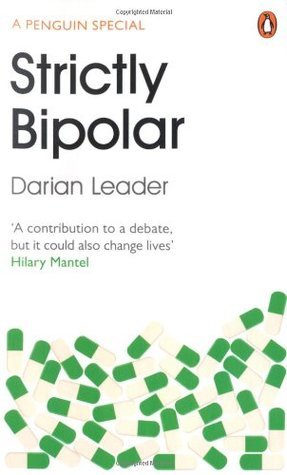What do you think?
Rate this book


112 pages, Paperback
First published May 2, 2013
The guilt that cannot be assuaged or inscribed for one generation will haunt the next, just as a debt is passed on. But this debt does not get settled. It crystallizes neither as paranoia ('the Other is responsible') nor as melancholia ('I am responsible'), see-sawing instead between the highs and lows of the manic-depressive subject. If responsibility departs in the mania, it returns in the depression.
One of the most frequently voiced questions is whether the 'illness' is some kind of foreign body or in fact an intrinsic part of the self. Would the person really be themselves after the proposed chemical excision of their mania? Do the highs and lows reveal or obscure who they really are? Should manic-depression be seen as constituting or as compromising the self? The remarkable ubiquity of these questions perhaps echoes the underlying uncertainty about a responsibility. Not knowing whether the manias and depressions belong to us or not reflects the difficulty of not knowing whether the responsibility is ours or someone else's. And isn't the most common thought after a manic episode precisely to ask 'What have I done?'
Manic-depressive subjects may arrive at key connections in therapy, which have little or zero effect, as if insight had no real value. Perhaps what has made some clinicians despair of working with manic-depression here is infact a clue as to its very logic. When manic, the signifiers that determine one's life are just words among other words, as if their full weight has not been registered. They canbe cast as mere jokes or flippant comments. The depression is then the return of their weight, the massive impact of which is absent in the times of mania.
There is thus a real dilemma in mania of balancing preservation and destruction. Something must be kept safe from one's own rage or from its own self-destructive tendencies. Rather than grappling with the messy, turbulent mixture of love and hate, destruction and admiration, the manic-depressive person opts for a more extreme and ultimately more coherent solution: to separate love and hate categorically, so that one does not contaminate the other. This means, effectively, that the world of the manic-depressive is peopled with devils and angels. It is either copiously full or desperately empty.
Rather than becoming increasingly and exclusively obsessed with the fine-tuning of medication, we need to situate the life of the manic-depressive subject in context, exploring the detail of the highs and the lows and resisting the easy option of a blanket appeal to biology. Manic-depression must be carefully distinguished from vague and unhelpful notions of bipolar spectrum disorders, and diagnosed through its signature motifs: the flight of ideas, the special sense of connectedness to the world, the oscillation of a fault, and the effort to create a categorical separation of good and bad.